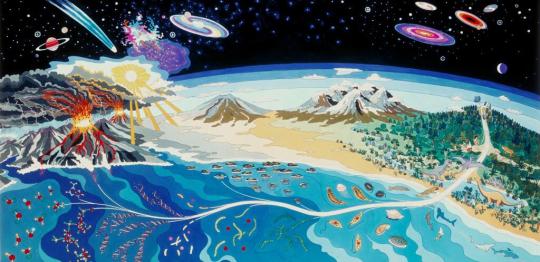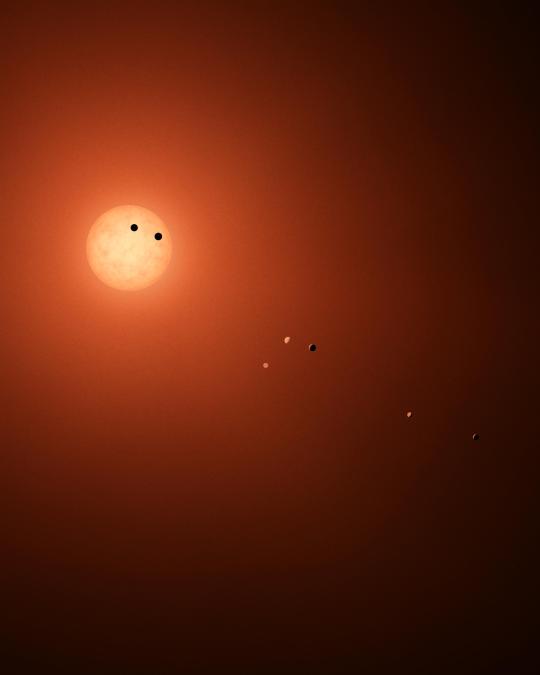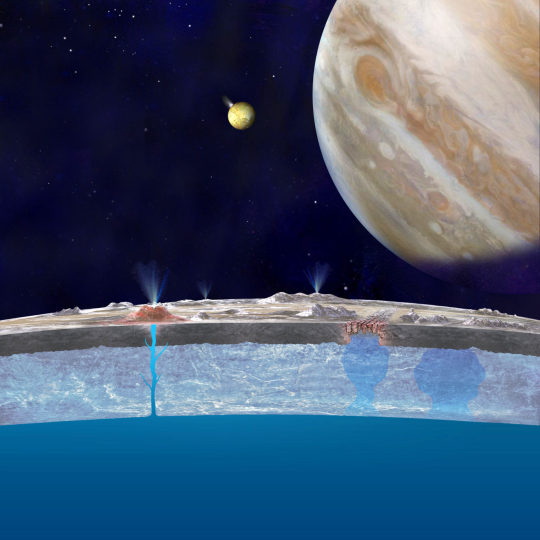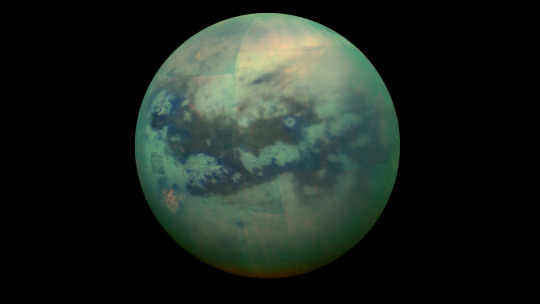Text
lol so my parents and I were talking about science shit and my step dad just said “no offense, but you’re not smart enough to do astrobiology”
Lmao, ain’t he gonna feel dumb when I change the fucking world
12 notes
·
View notes
Text
i never see positivity for us so: if you had bad grades, dropped out, or cheated your way through school i love you so much and you deserve the world <3
71K notes
·
View notes
Text
Some questions:
- How tall could trees grow on Mars?
- Would some animals get ridiculously good at jumping?
- Would the low gravity allow animals to grow larger than normal because of the reduced stress on their bodies, eventually resulting in megafauna?
It would also make sense to become larger on Mars because it would be very cold to begin with and help to retain body heat.
- What about speed? You don’t need to expend a ton of energy to get around on Mars, but how do you pick up speed when you practically float to the ground? What would that change about predator:prey dynamics? Maybe ambush predation would be the way to go and predators would become insanely well camouflaged.
293 notes
·
View notes
Photo

Curious about NASA’s next mission to the Red Planet – the Mars 2020 Perseverance rover? Here’s your chance to ask an expert!
Targeted for launch to the Red Planet in July 2020, our Mars 2020 Perseverance rover will search for signs of ancient life. Mission engineer Lauren DuCharme and astrobiologist Sarah Stewart Johnson will be taking your questions in an Answer Time session on Friday, July 17 from noon to 1pm ET here on our Tumblr! Make sure to ask your question now by visiting http://nasa.tumblr.com/ask
Lauren DuCharme is a systems engineer at NASA’s Jet Propulsion Laboratory (JPL) in Southern California, where she’s working on the launch and cruise of the Perseverance rover. Lauren got her start at JPL as an intern. Professor Sarah Stewart Johnson is an astrobiologist at Georgetown University in Washington. Her research focuses on detecting biosignatures, or traces of life, in planetary environments.
Fun Facts:
The name Perseverance was chosen from among the 28,000 essays submitted during the “Name the Rover” contest. Seventh-grader Alex Mather wrote in his winning essay, “We are a species of explorers, and we will meet many setbacks on the way to Mars. However, we can persevere. We, not as a nation but as humans, will not give up.”
Perseverance will land in Jezero Crater, a 28-mile-wide (45-kilometer-wide) crater that scientists believe was once filled with water.
Perseverance carries instruments and technology that will pave the way for future human missions to the Moon and Mars. It is also carrying 23 cameras and two microphones to the Red Planet — the most ever flown in the history of deep-space exploration.
Perseverance is the first leg of a round trip to Mars. It will be the first rover to bring a sample caching system to Mars that will package promising samples for return to Earth by a future mission.
Make sure to follow us on Tumblr for your regular dose of space: http://nasa.tumblr.com.
2K notes
·
View notes
Text
Astrobiology
A brief summary on astrobiology. Astrobiology, formerly known as exobiology, is an interdisciplinary scientific field concerned with the origins, early evolution, distribution, and future of life in the universe. Astrobiology considers the question of whether extraterrestrial life exists, and if it does, how humans can detect it.

Astrobiology makes use of molecular biology, biophysics, biochemistry, chemistry, astronomy, physical cosmology, exoplanetology and geology to investigate the possibility of life on other worlds and help recognize biospheres that might be different from that on Earth.

The origin and early evolution of life is an inseparable part of the discipline of astrobiology. Astrobiology concerns itself with interpretation of existing scientific data, and although speculation is entertained to give context, astrobiology concerns itself primarily with hypotheses that fit firmly into existing scientific theories.

This interdisciplinary field encompasses research on the origin of planetary systems, origins of organic compounds in space, rock-water-carbon interactions, abiogenesis on Earth, planetary habitability, research on biosignatures for life detection, and studies on the potential for life to adapt to challenges on Earth and in outer space

Some researchers suggested that these microscopic structures on the Martian ALH84001 meteorite could be fossilized bacteria.
Biochemistry may have begun shortly after the Big Bang, 13.8 billion years ago, during a habitable epoch when the Universe was only 10–17 million years old. According to the panspermia hypothesis, microscopic life—distributed by meteoroids, asteroids and other small Solar System bodies—may exist throughout the universe.

According to research published in August 2015, very large galaxies may be more favorable to the creation and development of habitable planets than such smaller galaxies as the Milky Way. Nonetheless, Earth is the only place in the universe humans know to harbor life.

Estimates of habitable zones around other stars, sometimes referred to as “Goldilocks zones, along with the discovery of hundreds of extrasolar planets and new insights into extreme habitats here on Earth, suggest that there may be many more habitable places in the universe than considered possible until very recently.

When looking for life on other planets like Earth, some simplifying assumptions are useful to reduce the size of the task of the astrobiologist. One is the informed assumption that the vast majority of life forms in our galaxy are based on carbon chemistries, as are all life forms on Earth. Carbon is well known for the unusually wide variety of molecules that can be formed around it. Carbon is the fourth most abundant element in the universe and the energy required to make or break a bond is at just the appropriate level for building molecules which are not only stable, but also reactive. The fact that carbon atoms bond readily to other carbon atoms allows for the building of extremely long and complex molecules.

The presence of liquid water is an assumed requirement, as it is a common molecule and provides an excellent environment for the formation of complicated carbon-based molecules that could eventually lead to the emergence of life. Some researchers posit environments of water-ammonia mixtures as possible solvents for hypothetical types of biochemistry. The kinds of living organisms currently known on Earth all use carbon compounds for basic structural and metabolic functions, water as a solvent, and DNA or RNA to define and control their form. However, If life exists on other planets or moons, it may be chemically similar; it is also possible that there are organisms with quite different chemistries—for instance, involving other classes of carbon compounds, compounds of another element, or another solvent in place of water.

False-color Cassini radar mosaic of Titan’s north polar region; the blue areas are lakes of liquid hydrocarbons. "The existence of lakes of liquid hydrocarbons on Titan opens up the possibility for solvents and energy sources that are alternatives to those in our biosphere and that might support novel life forms altogether different from those on Earth."—NASA Astrobiology Roadmap 2008.
A third assumption is to focus on planets orbiting Sun-like stars for increased probabilities of planetary habitability. Very large stars have relatively short lifetimes, meaning that life might not have time to emerge on planets orbiting them. Very small stars provide so little heat and warmth that only planets in very close orbits around them would not be frozen solid, and in such close orbits these planets would be tidally "locked” to the star.

The long lifetimes of red dwarfs could allow the development of habitable environments on planets with thick atmospheres. This is significant, as red dwarfs are extremely common.
Life in the Solar System
Thought on where in the Solar System life might occur, was limited historically by the understanding that life relies ultimately on light and warmth from the Sun and, therefore, is restricted to the surfaces of planets. The three most likely candidates for life in the Solar System are the planet Mars, the Jovian moon Europa, and Saturn’s moons Titan, and Enceladus.



Another planetary body that could potentially sustain extraterrestrial life is Saturn’s largest moon, Titan. Titan has been described as having conditions similar to those of early Earth. On its surface, scientists have discovered the first liquid lakes outside Earth, but these lakes seem to be composed of ethane and/or methane, not water. Some scientists think it possible that these liquid hydrocarbons might take the place of water in living cells different from those on Earth.


Rare Earth hypothesis
The Rare Earth hypothesis postulates that multicellular life forms found on Earth may actually be more of a rarity than scientists assume. It provides a possible answer to the Fermi paradox which suggests, “If extraterrestrial aliens are common, why aren’t they obvious?” It is apparently in opposition to the principle of mediocrity, assumed by famed astronomers Frank Drake, Carl Sagan, and others.

The Principle of Mediocrity suggests that life on Earth is not exceptional, and it is more than likely to be found on innumerable other worlds. read more
2K notes
·
View notes
Text
You ever get so bored while you procrastinate that you just start studying in order to stimulate your brain?
6 notes
·
View notes
Text
what’s a girl gotta do to get some studyblr mutuals around here?

37 notes
·
View notes
Text

Bottle of hand sanitiser I drew while my sister got her hair cut!
99 notes
·
View notes
Text

Do you ever start studying something and realize that it’s the thing you want to do for the rest of your life?
3 notes
·
View notes
Text
Ok, but like, how many citations is too many my guy
1 note
·
View note
Text
Little Things I Love About Anesthesia (Residency)
- Syringes and needles. So many syringes and needles.
- When all of the labels are neatly lined up and facing the same direction. Or just generally when everything is neatly lined up and facing the same direction.
- Getting that perfectly crisp loss of resistance on epidural placement.
- When patients say, “Wow, getting that IV [or other awake procedure] didn’t hurt at all!” (Thank you, intradermal/subcutaneous 1% lidocaine.)
- Smooth wakeups, especially after propofol TIVA with adjunctive dexmedetomidine, lidocaine, or remifentanil/sufentanil infusions. The best usually involve some variation of the arms-crossed-behind-the-head position.
- Insta-bonding with patients over commonalities or shared opinions. There’s no better way to set a patient (and yourself) at ease.
- Insta-bonding with other staff over commonalities or shared opinions. I recently discovered that one of our 64-year-old orthopedic surgeons and I have freakishly identical tastes in music (both rock and classical). Not sure if that says more about him or about me.
- Feeling like an airway ninja. So far, this has most commonly occurred after (1) awake fiberoptic intubation, (2) feeling tracheal rings with the bougie, or (3) just plain getting that coveted Cormack-Lehane grade 1 view.
- Visualizing local anesthetic spread on ultrasound in exactly the place you intended.
- An effective regional anesthetic. There are few things more satisfying than a (mostly) awake patient remaining completely comfortable while a surgeon is literally drilling, sawing, and hammering away at their bones.
- Planning for cases and preparing the OR. It feels like a sacrosanct ritual, a meticulous preparation for any contingency that might arise.
- Being a go-to guy for all matters relating to cardiopulmonary physiology, pharmacology, and difficult access.
- Learning all of the tiny details that can make or break a smooth (and safe) anesthetic plan. They’re a pain and a half to learn, but the process is endlessly rewarding.
- Being, for all intents and purposes, the medical equivalent of a potions master.

86 notes
·
View notes
Text
me: I’m so stressed!! When will I finally be finished with exams, there are so many things I could do?? Help?!?!
me, during holidays: I am so bored!! Wow!! What should I do with my life? Help???
4K notes
·
View notes
Text
Research ideas for bored students
The evolution of national identity in the country of your interest (ancient or modern)
The influence of paganism on christianity in Ireland and Scotland.
The impact that fairy beleif had on the Scottish witch hunts.
How fashion was influenced by the second world war.
The differences between and evolution of first, second and third wave feminism.
The impact the post-modern globalism has had on human rights.
Depictions of homosexuality in the ancient world (are there similarities/differences between nations?)
The evolution of tavern and drinking cultue in England, Scotland and the Netherlands.
The portrayal of women in early-modern English ballads.
The use of certain tunes or melodies in E.M. English ballads.
Portrayals of the devil in E.M. English ballads.
The difference between collective memory and historical facts (war is a time when our memories are often romanticised).
Fashion in the Elizabethan era and how it changed after.
The evolution of pens and writing materials
Historical methods of making paint/paint thinners.
Men in the early-modern witch hunts.
Differences between old world and new world witch hunts.
The use of torture in witch trials and the laws regarding torture (differences between countries)?
The use of salt as currency.
Depictions of intoxiication in ancient art.
How ancient societies viewed drinking and how they drank.
The lives of great poets.
The decline of the latin language.
The English civil war during the 17 century.
The relationship between ancient Celts and the Romans.
Religious symbolism in early modern art.
The history and evolution of marriage.
“In Praise of Folly,” by Desiderius Erasmus
The Protestant Reformation and/or the resulting split of protestantism (calvinism, lutheranism, anabaptists, etc.)
The history of Christmas in the new world.
Add your own in the comments!
7K notes
·
View notes
Text
How to activate your "happiness chemicals"...
DOPAMINE ~ the reward chemical
Complete a task
Doing self care acitivites
Eating some food
Celebrating your little wins.
OXYTOCIN ~ the love hormones
Playing with a dog
Playing with a baby
Holding hands
Hugging someone
Giving someone else a compliment
SEROTONIN ~ the mood stabiliser
Meditating
Running
Be in the sun
Walk in nature
Swimming
ENDORPHIN ~ the pain relief
Laughing exercises
Essential oils
Eating dark chocolate
Running
48K notes
·
View notes


